BalamThe Endangered King of the Mayan Jungle by Fernando Constantino Martinez Belmar.
Balam (Jaguar in the Mayan language) is a species of high cultural and ecological significance in Mexico.
With around 21,000 images from over 2,300 photographers submitted, the jury had some tough decisions to make.
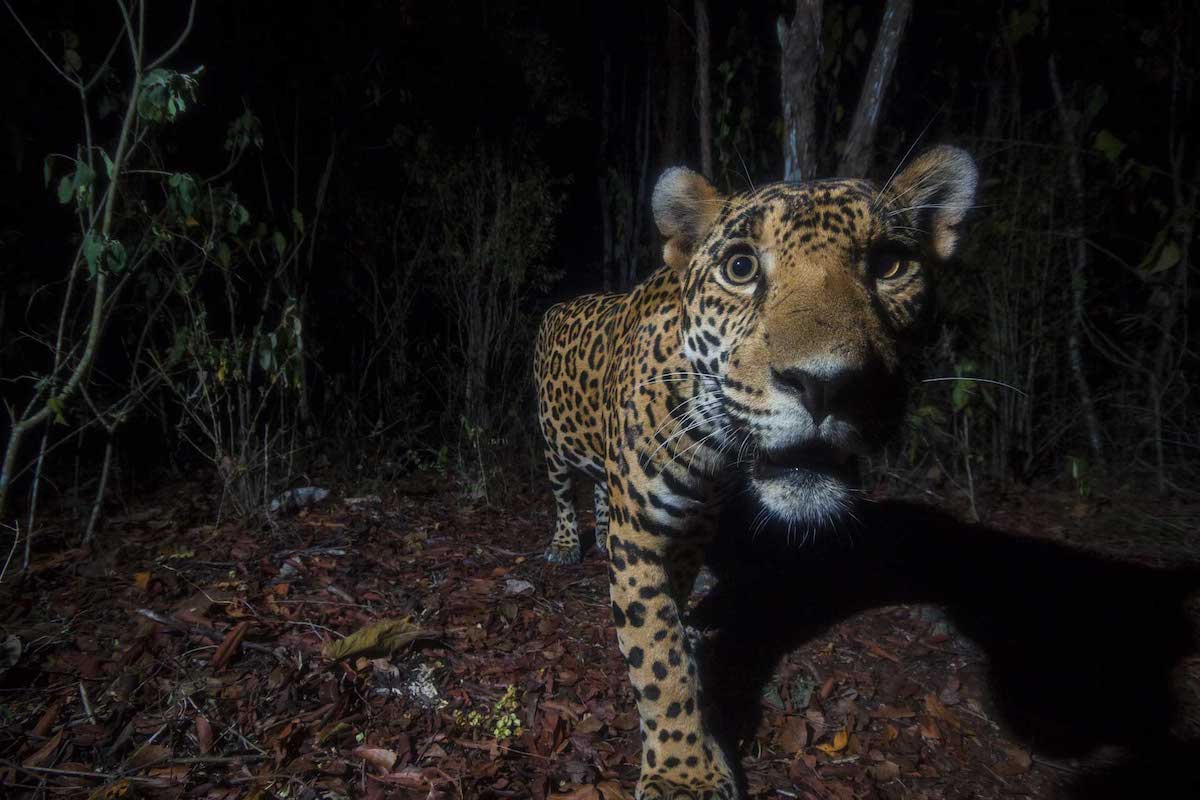
“Balam—The Endangered King of the Mayan Jungle” by Fernando Constantino Martinez Belmar. Winner, Photographer of the Year – Portfolio.“A Jaguar walks past a camera trap in the Mayan jungle of Quintana Roo, Mexico. Balam (Jaguar in the Mayan language) is a species of high cultural and ecological significance in Mexico. The apex predator requires large tracts of land to survive and is considered a great indicator of the region’s ecological health. Listed as Near Threatened on the IUCN Red List, illegal hunting, habitat fragmentation, and destruction have seen an increase in negative interactions between the cat and humans. As their habitats reduce, and therefore, their prey population base, jaguars are forced to approach human settlements to feed on livestock, which rarely bodes well for the big cat. Despite all this, there are people dedicated to the study and conservation of these cats, which allows for developing strategies to preserve their natural habitats and mitigate the negative impacts of human actions.”
Among other standouts is the creative duo ofKapil SharmaandYogendra Satam.
We are thrilled to see the growth in the number of participants and the geographical locations.
It truly has become an international platform for wildlife photographers!
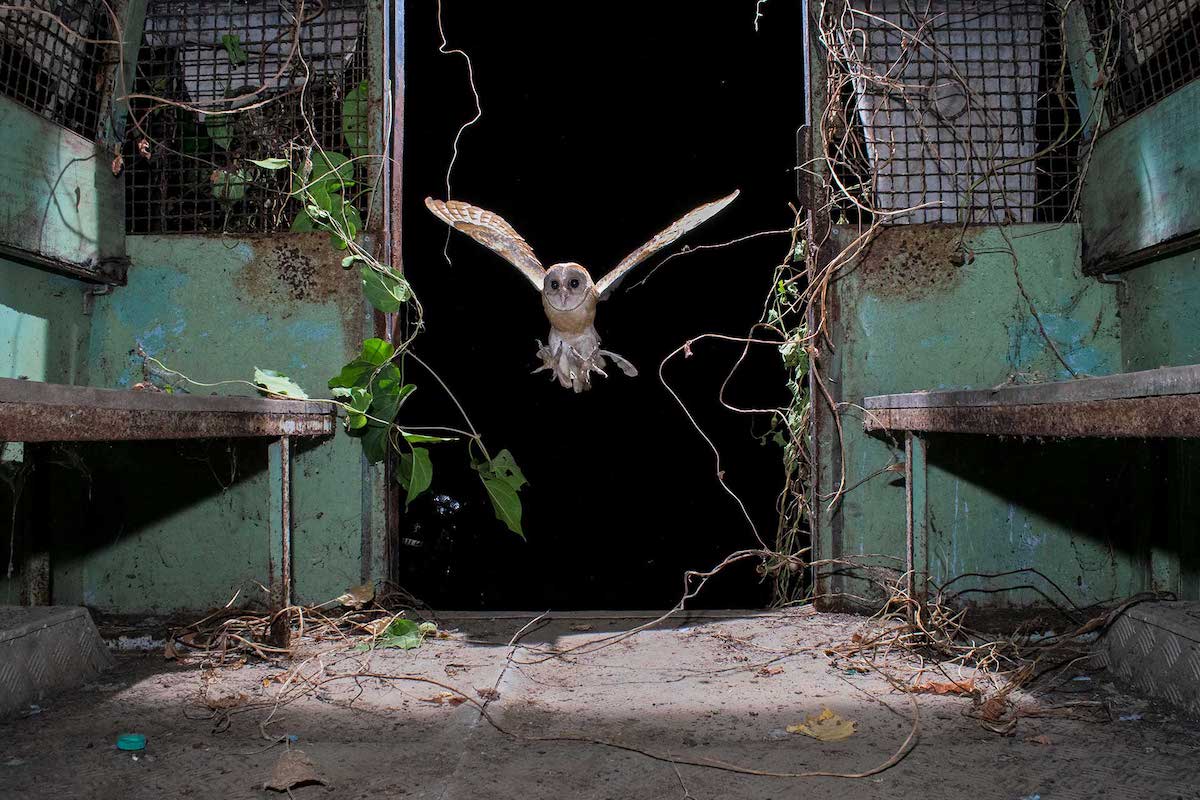
“Jailbreak” by Kapil Sharma and Yogendra Satam. Winner, Wildscape & Animals in Their Habitat.“Barn Owls on window sills, inside abandoned buildings, chimneys or even in a mall! We have seen them all. The most widespread land bird species does not take its title lightly. But here, the bird seems to be seeking refuge in a rather unusual location. The camera trap image shows a Barn Owl flying into an abandoned Mumbai Police van. Well, if you are looking for a safe habitat!”
See more winning images below and get inspired by the natural world.
The winners of the 2022 Nature inFocus Photographer Awards were selected from nearly 21,000 images.
Jailbreak by Kapil Sharma and Yogendra Satam.
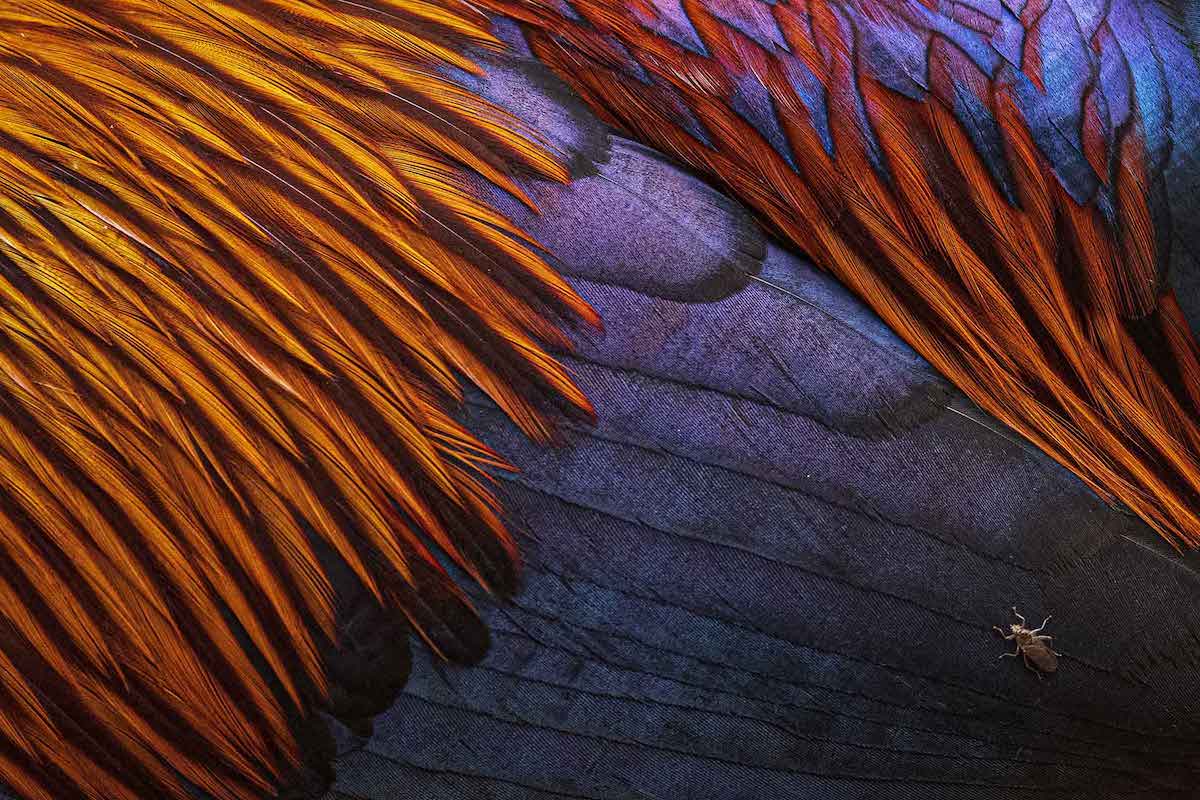
“Burnt Violet” by Ashane Marasinghe. Jury Selection, Creative Nature Photography.“The Sri Lanka Junglefowl is an endemic species that is a common sight across the island nation. A stunning burnt orange plumage with dark streaks, and an iridescent, glossy black tail, junglefowls are a sight for sore eyes. This close-up photograph of its wing is a confounding play of colors, almost hypnotizing, if not for a certain photobombing winged friend.”
We have seen them all.
The most widespread land bird species does not take its title lightly.
But here, the bird seems to be seeking refuge in a rather unusual location.
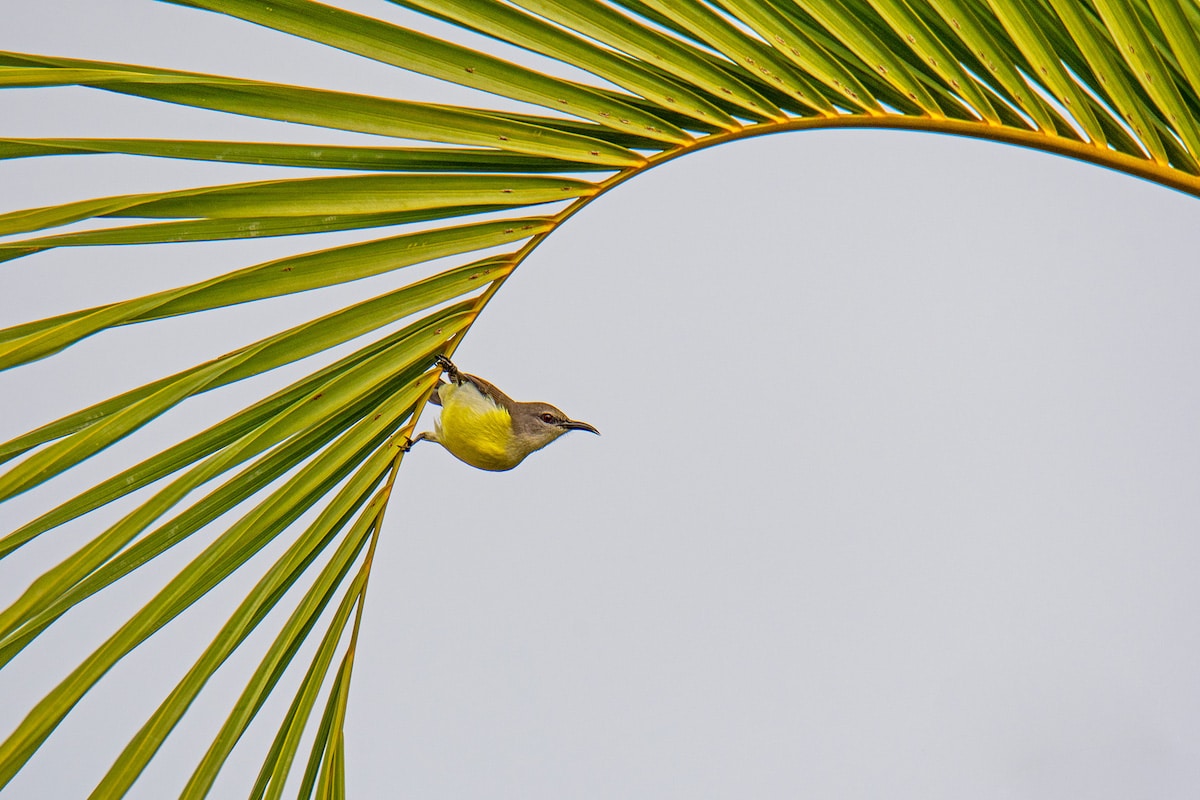
“She’s Like the Wind” by KM Anand. Winner, Animal Portraits.“A female Purple Sunbird prepares to take off from the edge of a curved coconut frond, creating the illusion that her tiny body is heavy enough to bend the leaf and use it as a launchpad to throw her into the lightness of flight.”
The camera trap image shows a Barn Owl flying into an abandoned Mumbai Police van.
Well, if you are looking for a safe habitat!
Burnt Violet by Ashane Marasinghe.
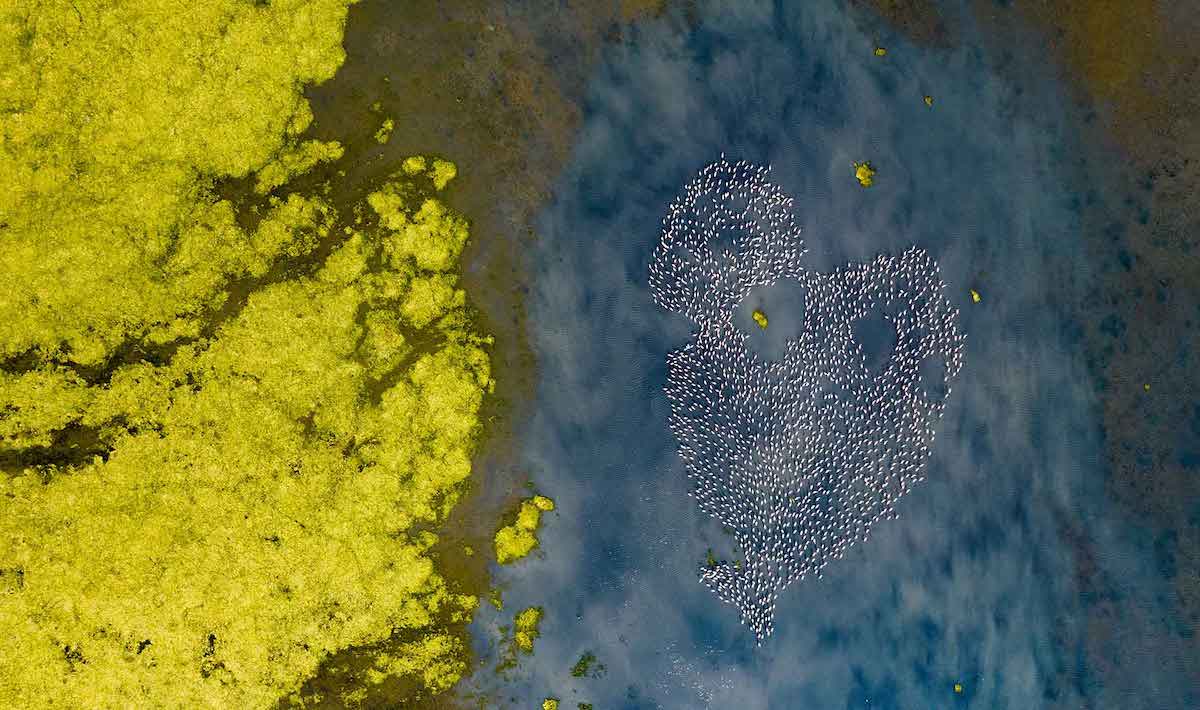
“Heart of Pink” by Raj Mohan T. Jury Selection, Creative Nature Photography.“A bird’s eye view of a wetland shows a large colony of flamingos shaped almost like a heart as it charges back and forth in a tight-knit formation—a courtship dance known as marching. Alongside the busy flamboyance are quickly accumulating algal populations that rob aquatic life of precious oxygen.”
Shes Like the Wind by KM Anand.
Alongside the busy flamboyance are quickly accumulating algal populations that rob aquatic life of precious oxygen.
Heat Tasting by Sandeep Das.
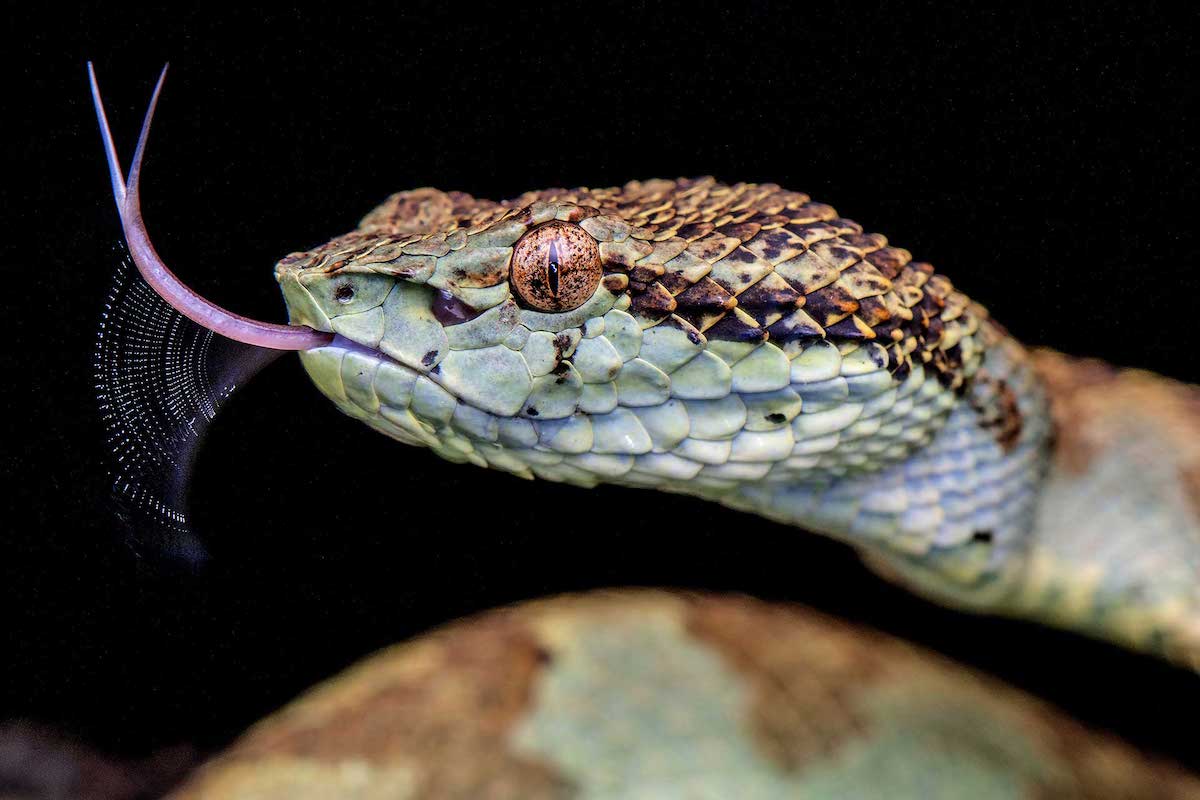
“Heat Tasting” by Sandeep Das. Jury Selection, Animal Portraits.“Sandeep captured the flick of an Anamalai Pit Viper’s tongue using the rear curtain sync mode, whereby the flash is fired at the end of the exposure, thereby capturing the complete motion trail. Pit vipers stick out their tongue to collect scents, and when drawn back in, it comes in contact with the Jacobson’s organ on the roof of the mouth, helping in smell detection.”
Cloaked In Lilac by Sanjay Nair.
But these invasive plants are notorious for displacing native plant species within water bodies while reducing oxygen levels.
A Thorny Issue by Kapil Sharma.
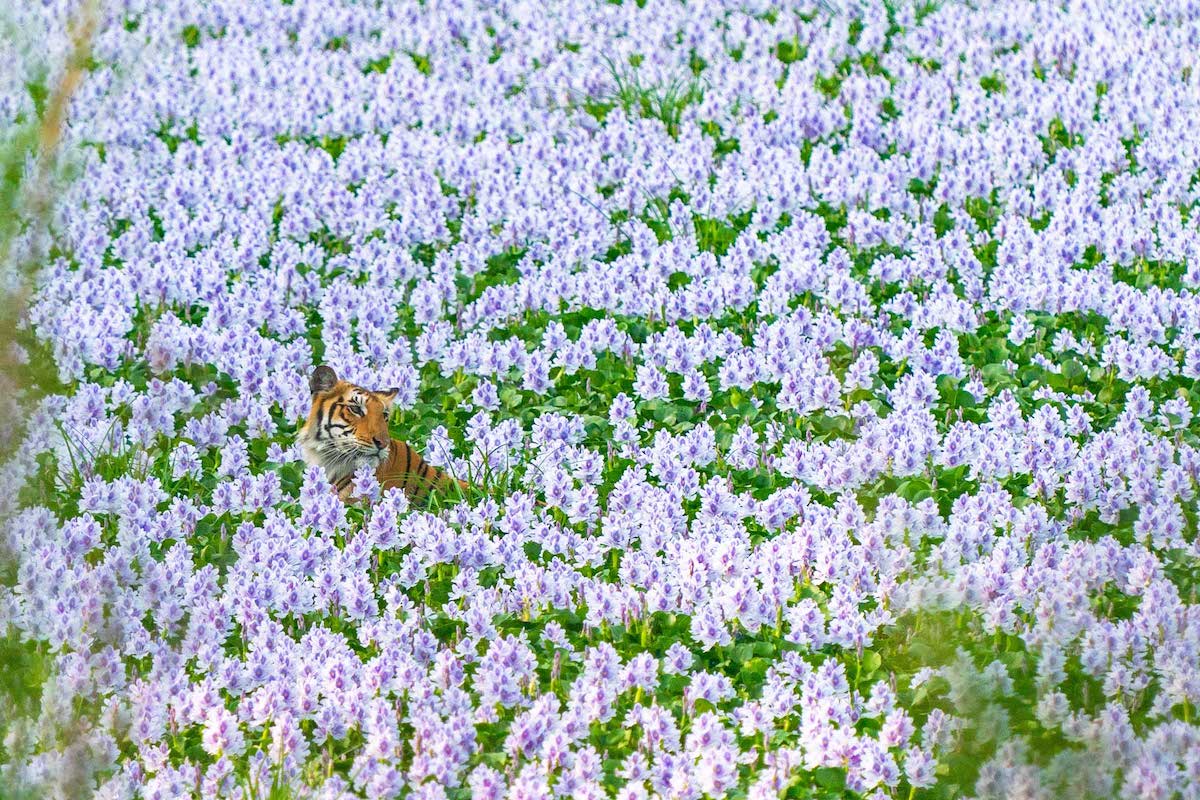
“Cloaked In Lilac” by Sanjay Nair. Jury Selection, Wildscape & Animals in Their Habitat.“Yes, this is a pretty image with the tiger’s stripes standing out in the middle of the purple water hyacinth flowers. But these invasive plants are notorious for displacing native plant species within water bodies while reducing oxygen levels. As seen in the image, even protected areas like national parks and tiger reserves are not immune to their impacts.”
It is also a potent reminder that feral dogs are not selective and affect wildlife across species.
The Seven Moons of Sahara by Kai Kolodziej.
The so-called horns are a single scale present above each eye.
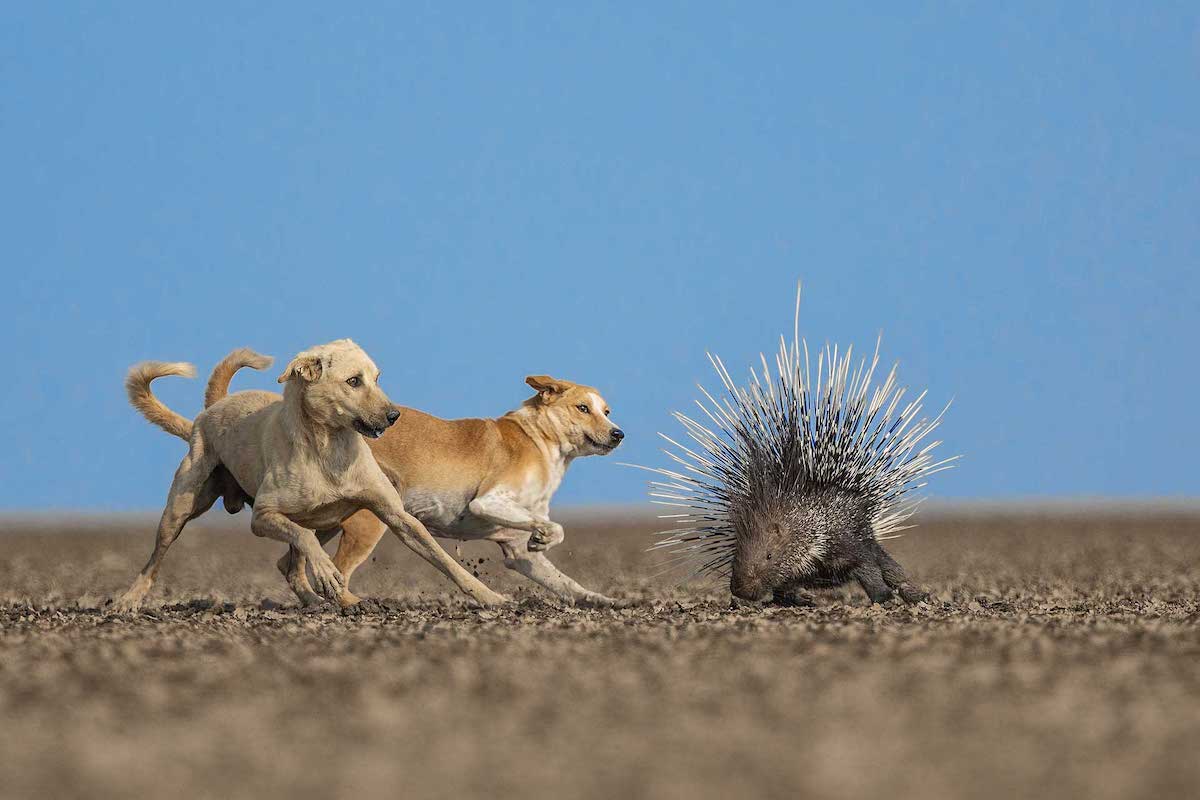
“A Thorny Issue” by Kapil Sharma. Winner, Conservation Focus.“The salt pans of the Little Rann of Kutch play host to a diverse range of fauna. A growing feral dog population in the region has become a significant cause for concern, as portrayed in this image of two dogs attacking an Indian Crested Porcupine. It is also a potent reminder that feral dogs are not selective and affect wildlife across species.”
Jury Selection, Animal Behaviour.Here’s how it works in the world of the Grey-headed Swamphen.
If that doesn’t work, then it’s time to be a bit more dramatic.
The opponents fly at each other feet-first and peck their way to victory.
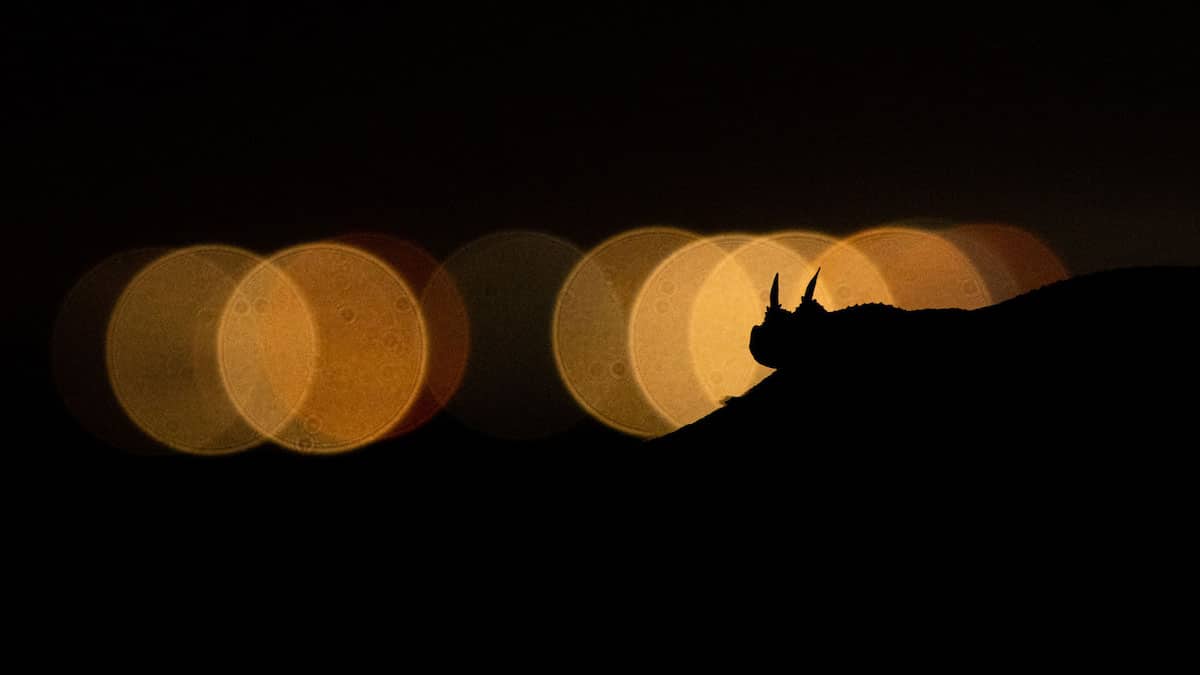
“The Seven Moons of Sahara” by Kai Kolodziej. Winner, Creative Nature Photography.“The Horned Desert Viper or Saharan Horned Viper is one of the most commonly seen snakes in the North African and Middle Eastern deserts. This stunning silhouette against the city lights illustrates the signature ‘horns' of the reptile, its most distinguishing feature. The so-called horns are a single scale present above each eye.”
Tranquillity by Lakshitha Karunarathna.
Whooper Swans need ample space and spend a lot of their time swimming and foraging for food.
But don’t be fooled by the calmness that the image exuberates.
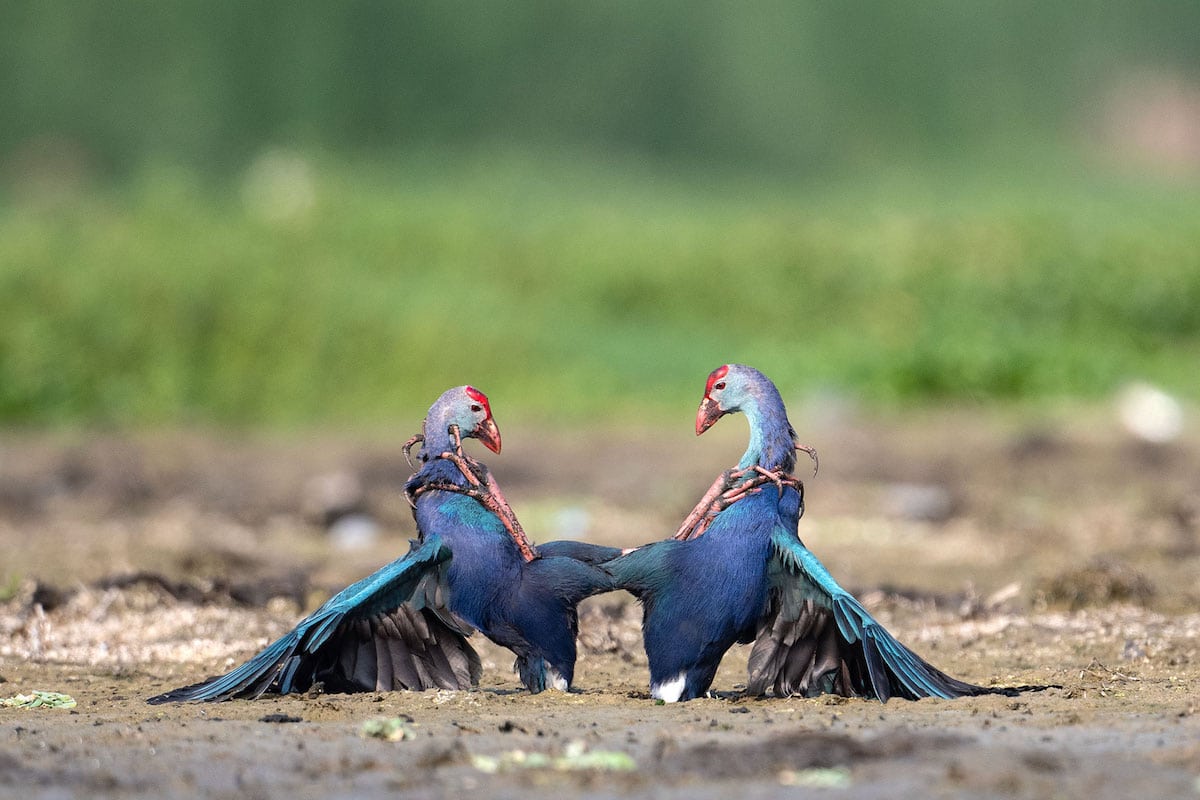
“Ka Pow!” by Karthikeyan Ponnambalamoorthy. Jury Selection, Animal Behaviour.“Here’s how it works in the world of the Grey-headed Swamphen. When breeding groups encounter an intruder in their territory, the first displays of threat include raising wings, bending down and flapping tails. If that doesn’t work, then it’s time to be a bit more dramatic. The opponents fly at each other feet-first and peck their way to victory.”
These large birds are equally boisterous.
Jaws-ome by Magnus Lundgren.
Winner, Animal Portraits.The Caribbean Reef Shark is an impressive and fast hunter.
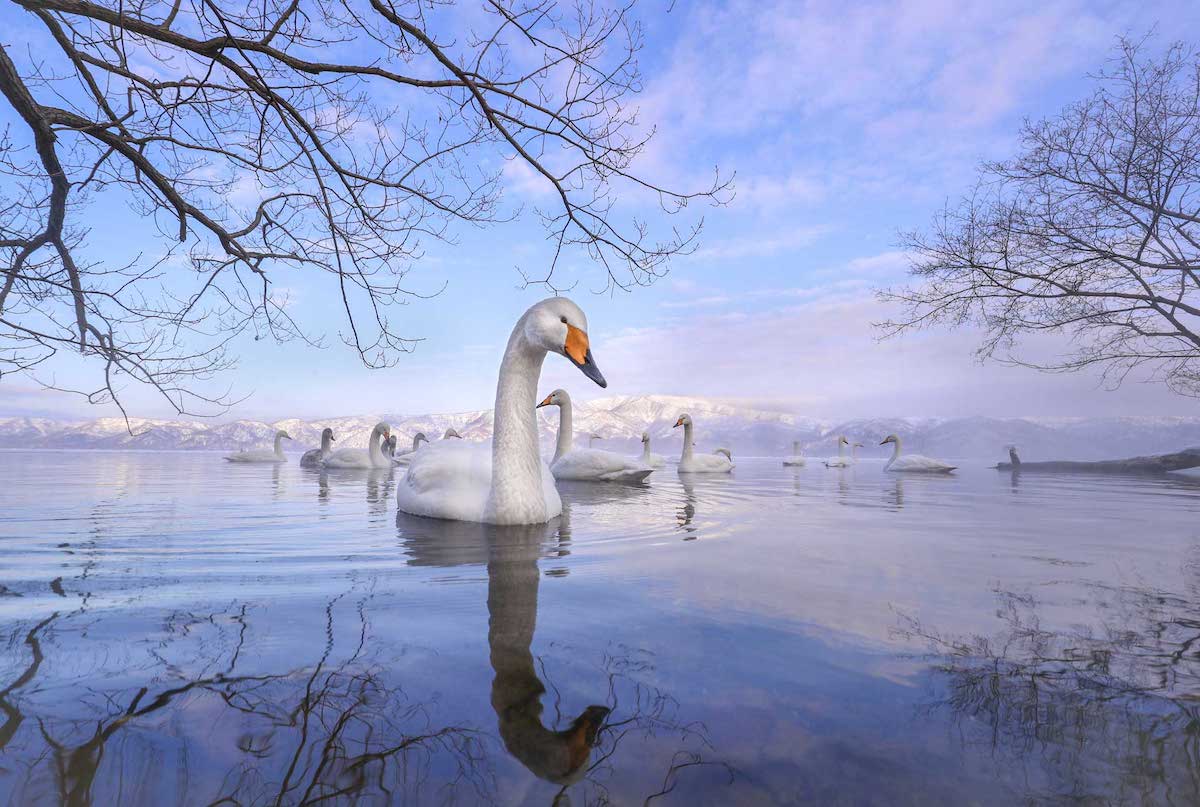
“Tranquillity” by Lakshitha Karunarathna. Jury Selection, Wildscape & Animals in Their Habitat.“If you ever decide to capture serenity in one frame, here it is! Whooper Swans need ample space and spend a lot of their time swimming and foraging for food. But don’t be fooled by the calmness that the image exuberates. These large birds are equally boisterous.”
A strong market demand for shark fins is the main driver.
Where the Giants Roam by Lalith Ekanayake.
The farmers are happy to allow these gentle giants to enter their paddy fields after harvest.
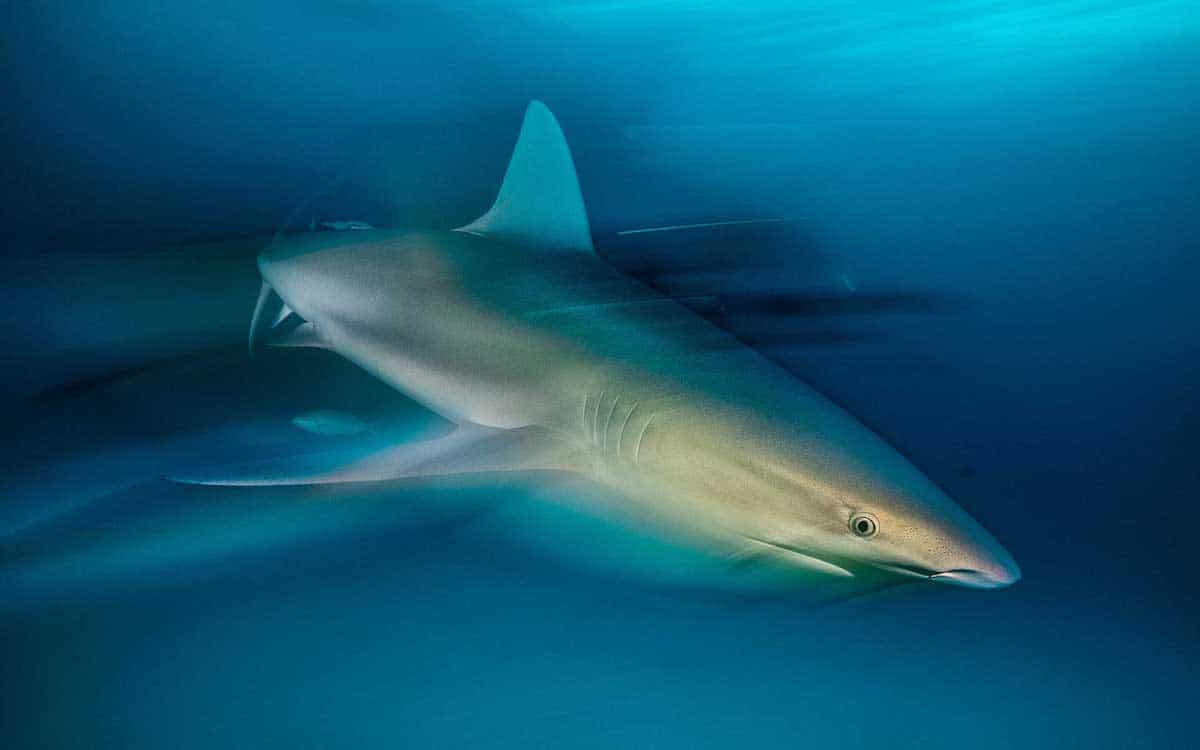
“Jaws-ome” by Magnus Lundgren. Winner, Animal Portraits.“The Caribbean Reef Shark is an impressive and fast hunter. With the help of a long shutter speed, two underwater strobes and some speedy camera movement, the photographer created this breathtaking portrait of the dynamic apex predator. Sharks are a protected species in the Bahamian reefs, like in many other parts of the world’s oceans, yet 80-100 million sharks get killed every year. A strong market demand for shark fins is the main driver. In order for shark conservation to be a success, Magnus believes that there needs to be an understanding that living sharks hold a greater value than dead ones.”
But they do everything possible to chase away the pachyderms during the crop season.
Chaos Theory by Nejib Ahmed.
They also set fire to dry paddy, further agitating the animal.
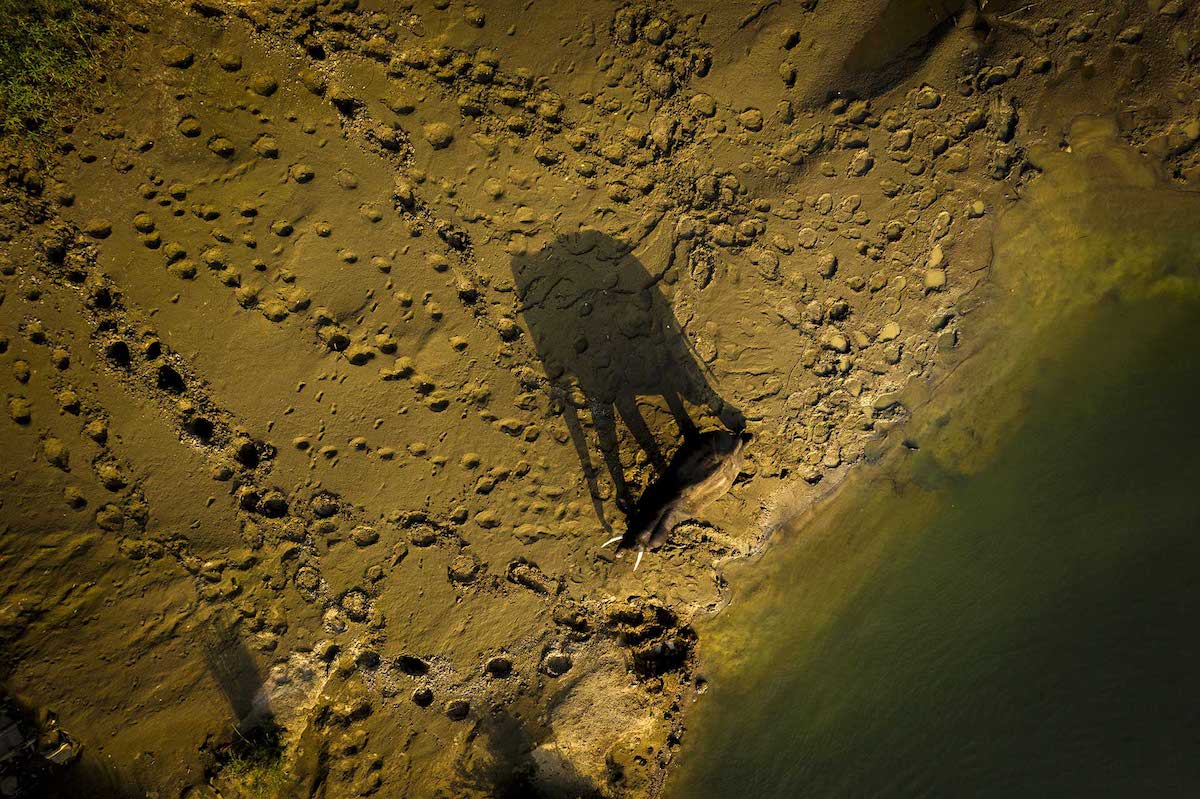
“Where the Giants Roam” by Lalith Ekanayake. Winner, Animal Portraits.“Elephants are a common sight along the river and in the paddy fields of Sri Lanka’s north-central province. The farmers are happy to allow these gentle giants to enter their paddy fields after harvest. But they do everything possible to chase away the pachyderms during the crop season. This aerial shot of a massive tusker beautifully captures its larger shadow against the riverbank decorated with the footprints of his herd.”
While the tigress ran amok, so did the people trying to flee the area.
One villager tried to confront the animal and was inflicted with minor injuries.
The tigress eventually retreated into the forest.
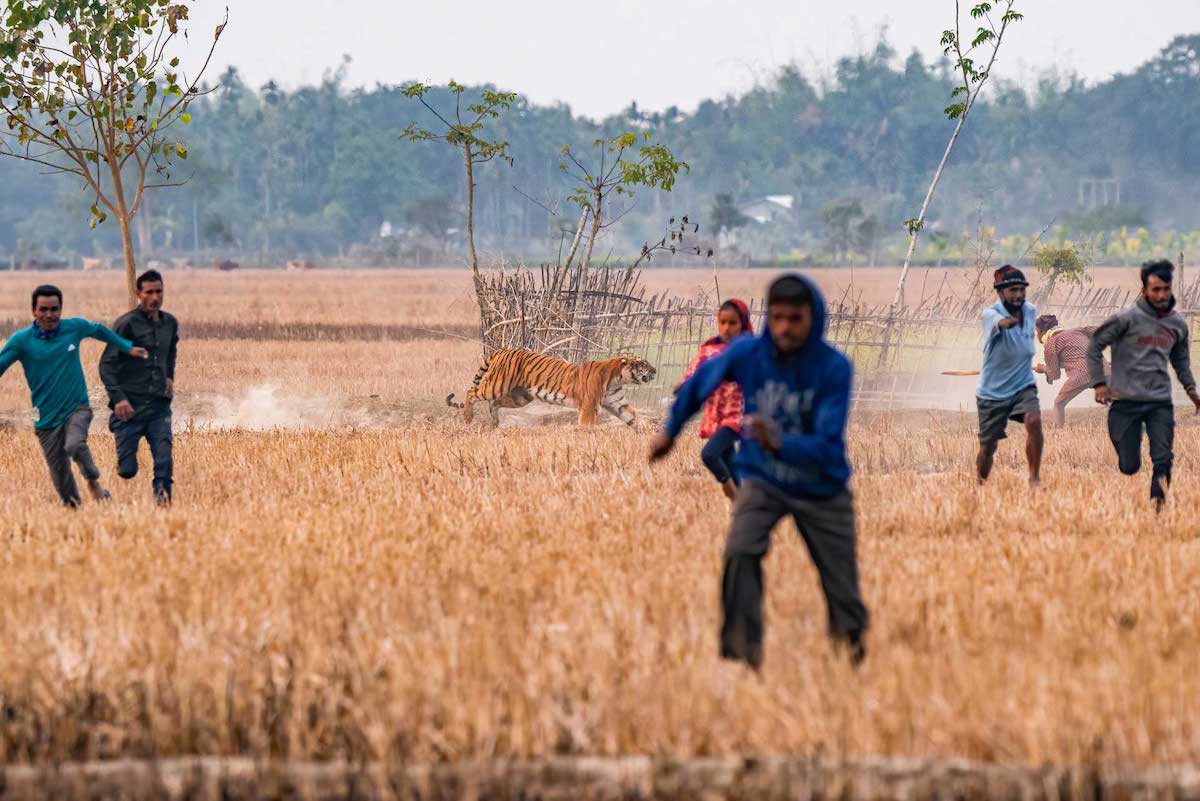
“Chaos Theory” by Nejib Ahmed. Winner, Conservation Focus.“While it’s often difficult to decode a conflict situation, one thing is for sure—fear fuels it from both ends. On spotting a tigress resting near the paddy fields, the villagers of Borsola near Orang Tiger Reserve panicked and began pelting stones at the felid. They also set fire to dry paddy, further agitating the animal. While the tigress ran amok, so did the people trying to flee the area. One villager tried to confront the animal and was inflicted with minor injuries. The tigress eventually retreated into the forest. The image portrays the ground realities of human-tiger conflict and emphazises the need for empowering local communities to manage these situations.”
Termite Control by Mangesh R Desai.
Yep, a pack of hyenas can take on some large animals.
What can we say?
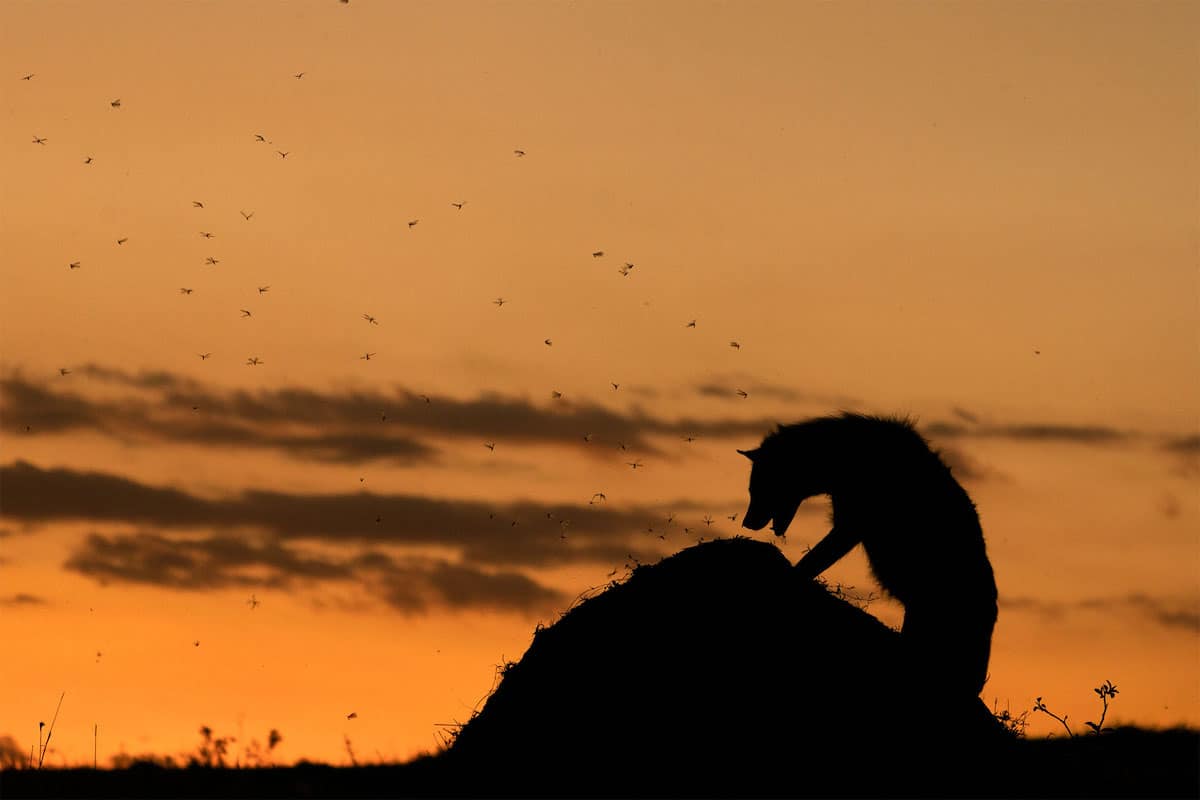
“Termite Control” by Mangesh R Desai. Winner, Animal Behaviour.“Look up images of hyenas hunting and you will most likely find scenes of a pack feeding on carcasses of animals like antelopes, wildebeest or even lions! Yep, a pack of hyenas can take on some large animals. But here, a Spotted Hyena has climbed on top of a termite hill, to make the most of what was available. What can we say? Some days you fight, and some days you termite!”
Some days you fight, and some days you termite!
Higher Up the Food Chain by Jomtup Charoenlapnumchai.
Winner, Young Photographer.Jomtup observed the bats leaving their caves every evening to get to feed.
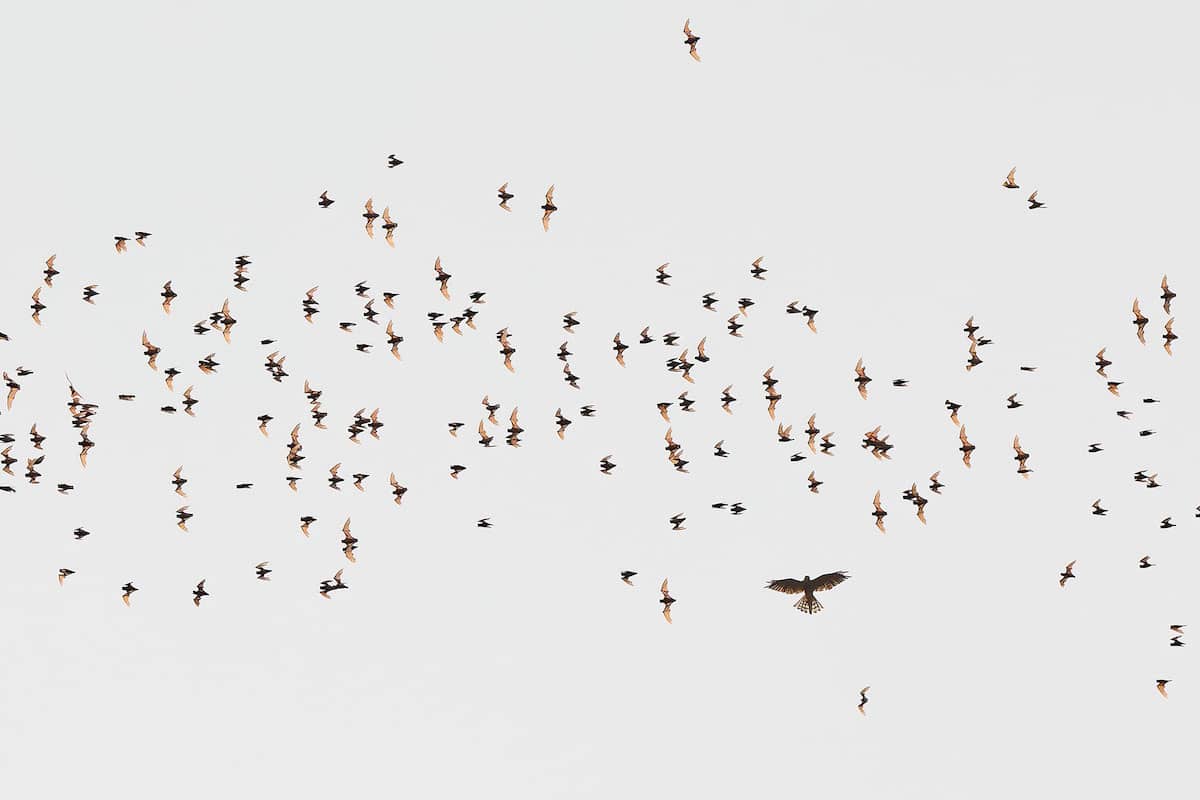
“Higher Up the Food Chain” by Jomtup Charoenlapnumchai. Winner, Young Photographer.“Jomtup observed the bats leaving their caves every evening in order to feed. Around the same time, the hawks would emerge to capture their prey—the bats. Being opportunistic feeders, hawks eat everything from rodents, small birds, insects to bats!”
Around the same time, the hawks would emerge to capture their preythe bats.
Being opportunistic feeders, hawks eat everything from rodents, small birds, insects to bats!
A Full Meal by Joshua Barton.
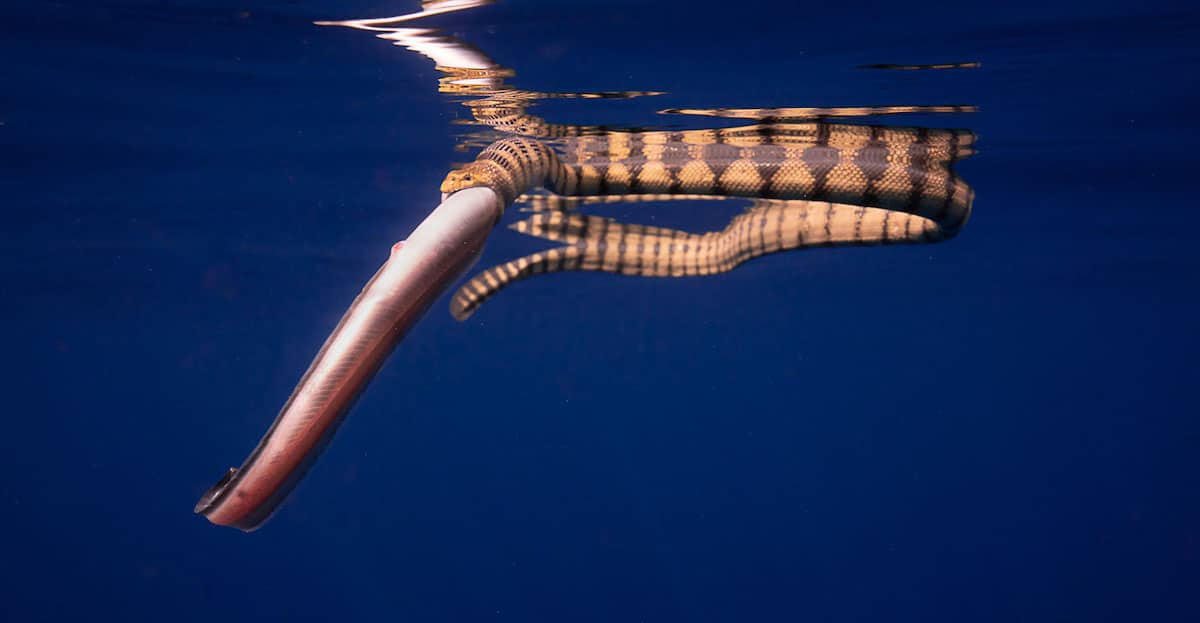
“A Full Meal” by Joshua Barton. Winner, Animal Behaviour.“If you think about it, it’s quite a conundrum for sea snakes. These marine serpents are surrounded by their prey, but in a world of coral reefs, rock crevices and quick maneuvers, to make an actual catch requires additional skills. Sea snakes are highly venomous and let their bite do most of the work. Here, a Striped Sea Snake latches onto its catch, making for a rare documentation of the reptile in action in the open sea.”
Winner, Animal Behaviour.If you think about it, it’s quite a conundrum for sea snakes.
Sea snakes are highly venomous and let their bite do most of the work.
Wings Of Life and Death by Anirban Dutta.
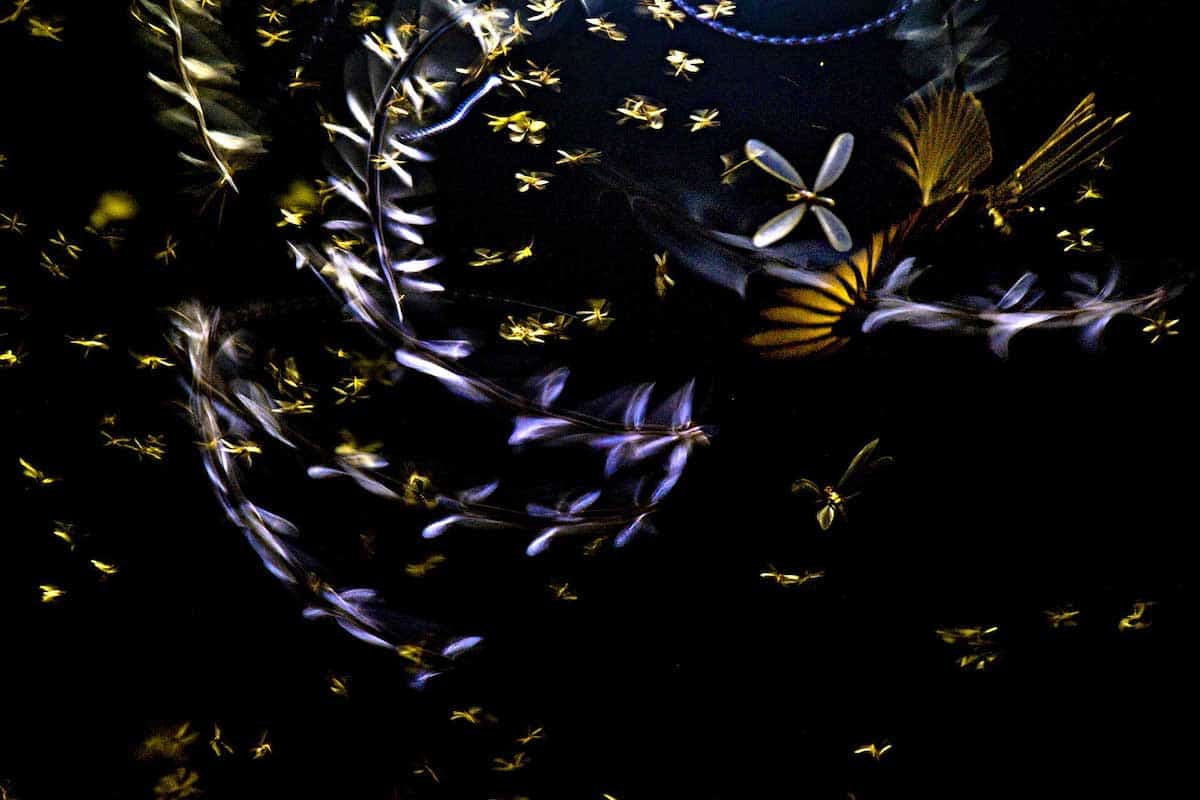
“Wings Of Life and Death” by Anirban Dutta. Winner, Creative Nature Photography.“At the start of the monsoon, as the first rains lash down on scorched earth, winged termites or alates emerge in huge numbers, with the singular purpose of breeding in what is known as the nuptial flight. Bright lights confuse the navigational systems of most animals, and it is common to see swarms of alates flying around street lamps. Anirban chanced upon a termite swarm near the local petrol bunk when suddenly a Black Drongo swooped in to feast on the termites. The whole thing was over in 15-20 minutes. The winged termites vanished, and so did the drongo.”
The whole thing was over in 15-20 minutes.
The winged termites vanished, and so did the drongo.
Nature inFocus:Website|Facebook|Instagram